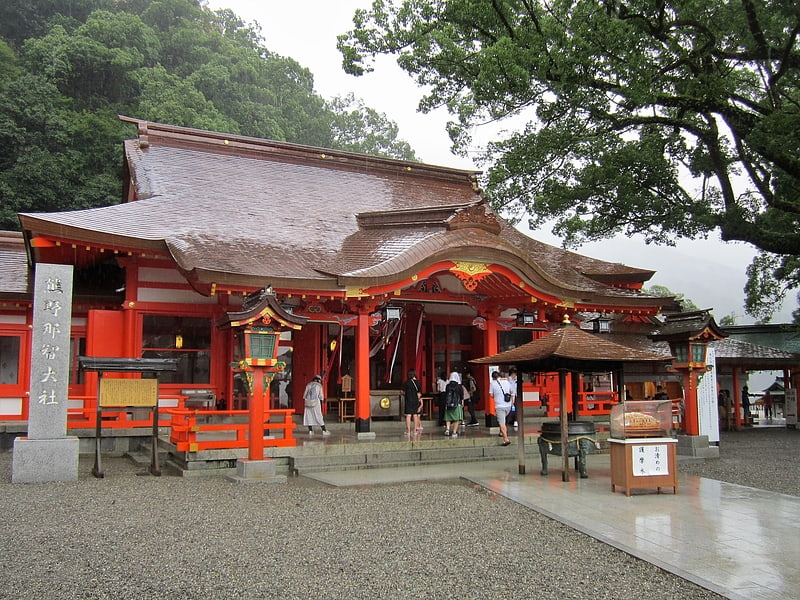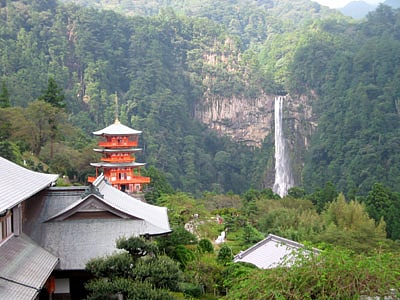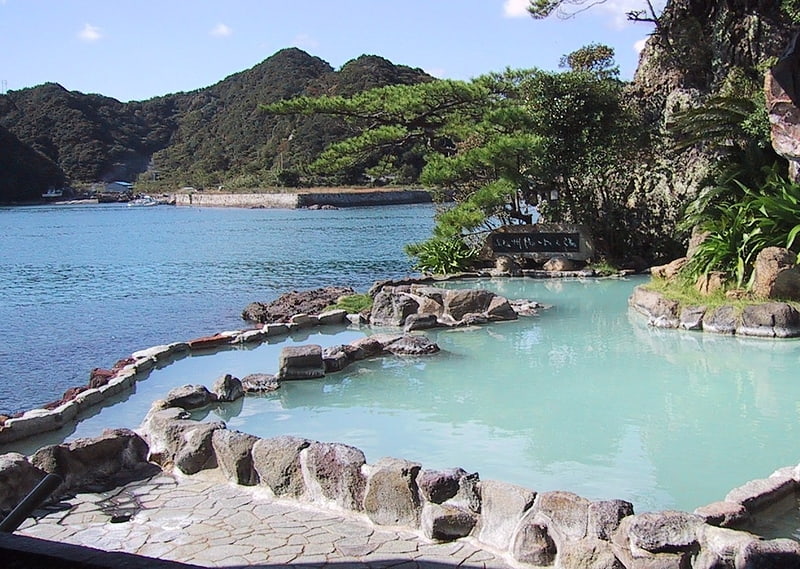Discover 4 hidden attractions, cool sights, and unusual things to do in Nachikatsuura (Japan). Don't miss out on these must-see attractions: Kumano Nachi Taisha, Nachi Falls, and Fudarakusan-ji. Also, be sure to include Nanki-Katsuura Onsen in your itinerary.
Below, you can find the list of the most amazing places you should visit in Nachikatsuura (Wakayama).
Table of Contents
Kumano Nachi Taisha

Also known as: 熊野那智大社
Shinto shrine in Nachikatsuura, Japan. Kumano Nachi Taisha is a Shinto shrine and part of the UNESCO-designated World Heritage Sacred Sites and Pilgrimage Routes in the Kii Mountain Range of Japan. The Kumano Kodō route connects it to other sites under the same classification, which are primarily located in Wakayama Prefecture, Japan. The four sites on the route, classified as pilgrimage destinations and World Heritage Sites, are: 1) Nachi Taisha; 2) Hongū Taisha; 3) Hayatama Taisha; 4) Koya-san.
Kumano Nachi Taisha is also one of the three sacred Kumano Sanzan shrines:
This classification is based mostly in Japanese history, as pilgrims would travel to all three sites to complete their pilgrimage.
Kumano Nachi Taisha is an example of Buddhist and Shinto syncretism (Shinbutsu shūgō) nestled in the Kii Mountains, near Kii Katsuura, Japan. Cedar forests surround the site. The Nachi Waterfall, worshiped at the Hiryū Shrine near Kumano Nachi Taisha, is believed to be inhabited by a kami called Hiryū Gongen. Also, there is a sacred tree at this site, the Sacred Camphor Tree, located between the Nachi Shrine (heiden) and Seigantoji temple. It is 850 years old and is said to have been planted by Taira-no-Shigemori (1138-1179). The straw rope (shimenawa) and paper flags show that this tree has been sanctified as a kami. The tree is alive with moss and ferns and other small plants growing on its ancient limbs. It is possible to enter the tree, where there is a small altar for making offerings.
Nachi-no-Hi Matsuri Fire Festival, performed on July 14, is the major festival of Kumano Nachi Taisha. It is a fire festival in which six-meter-high portable shrines symbolically representing the purification of the waterfall with the fires from oversized torches is laboriously carried by men dressed in white.[1]
Address: 1 Nachisan, 649-5301 Nachikatsura-cho
Nachi Falls

Also known as: 那智滝
Waterfall in Japan. Nachi Falls in Nachikatsuura, Wakayama Prefecture, Japan, is one of the best-known waterfalls in Japan. With a drop of 133 meters, it is the country's tallest water fall with single uninterrupted drop; however, the tallest waterfalls with multiple drops in Japan are Hannoki Falls, at 497 m, and Shōmyō Falls, at 350m.
There are two rocks at the top of the falls that are the guardian kami of the falls and the Shinto shrine. There was also a Buddhist temple here that was destroyed during the Meiji Restoration (late 19th century). Many shugenja and star-crossed lovers have leaped from the top of the waterfall in the belief that they will be reborn into Kannon's paradise. Early each morning the Shinto priest make offerings to the waterfall in a ritual. In 1918, a Sutra mound was excavated at the base of the waterfall and found to contain many important archaeological artifacts, including statues, mirrors, altar fittings and Sutra cylinders. These are now displayed in the Ryuhoden (“Treasure Hall”), located next to the Sanjūdō Pagoda (the 3-story pagoda). These Sutra mounds were created by priests in times of war to hide their treasures but also many items were buried in this way as a result of the belief that the end of the world was coming at the start of the 10th century.
Believed to house a kami called Hiryū Gongen worshiped at Kumano Nachi Taisha, it is part of the "Sacred Sites and Pilgrimage Routes in the Kii Mountain Range" UNESCO World Heritage Site.[2]
Fudarakusan-ji

Also known as: 補陀洛山寺
Temple in Nachikatsuura, Japan. Fudarakusan-ji is Tendai temple of the Higashimuro district, Wakayama prefecture, Japan. The name of temple comes from mount Potalaka. It is said to have been founded by Ragyō Shōnin, a monk from India.
In 2004, it was designated as part of a UNESCO World Heritage Site under the name Sacred Sites and Pilgrimage Routes in the Kii Mountain Range.[3]
Nanki-Katsuura Onsen

Nanki-Katsuura Onsen is a coastal onsen, or hot spring, located in Nachikatsuura, Wakayama Prefecture, Japan. Originally known as "Katsuura Onsen", the "Nanki-" was added to distinguish it from another onsen in Katsuura, Chiba.
Known as the "Matsushima of Kii", Nanki-Katsuura Onsen is one of the most popular hot springs in Japan due to its location along the coast and springs within caves. The spring is listed as the "Top 100 Onsens" by Kankokeizai News.[4]